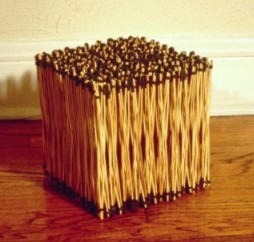
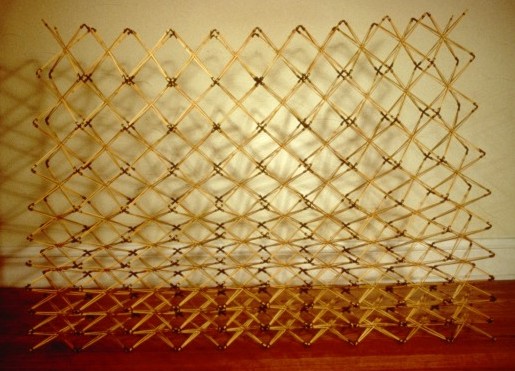
Gallery of change, movement, transformation The following pictures are static position of different configurations of individual nets. There are a number of different systems and a variety of positions to each to indicate how much they can move and change configurations. What you do not get is the extraordinary ease with which they move. They are made with 10" bamboo sticks held together with rubber tubing. Some are colored with fabric dye in a variety of ways. Towards the bottom there is a system that is woven using drinking straws and held together with kite string. |


1200 bamboo sticks woven in sets of 12. Bundled it mesures a 10"x10"x10" block. There are 100 joints in this system that when open spread over 7 square feet. |
These are a few variations of reconfiguring the open net. |
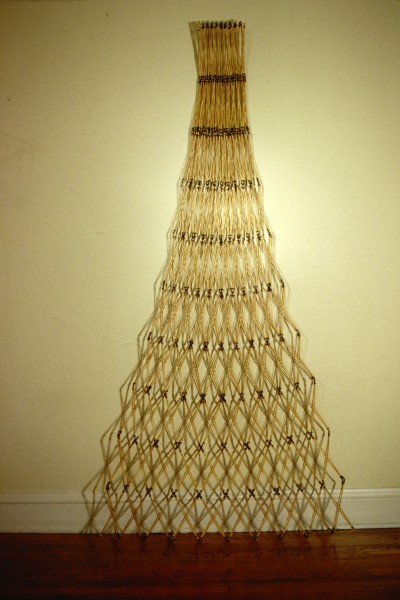 | ||
|
| ||
 |
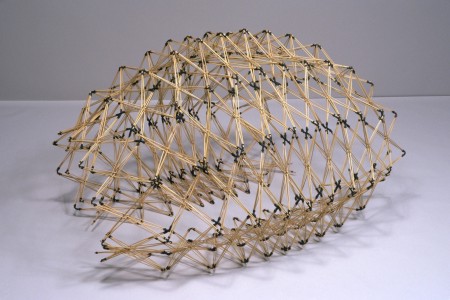 |
Here are pictures of various positions of the same system of 100 joints where one half are bamboo sticks and the other half are stainless steel rods. |
| ||
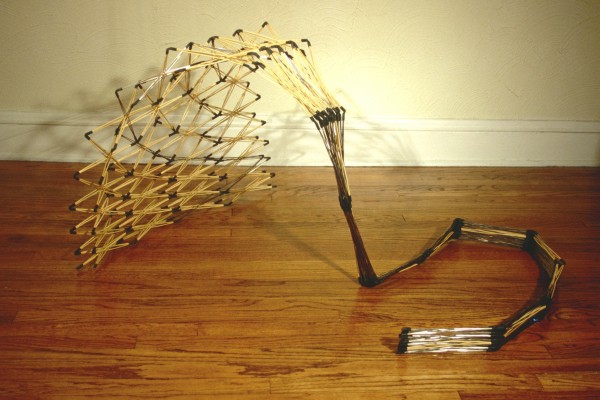 |
 |
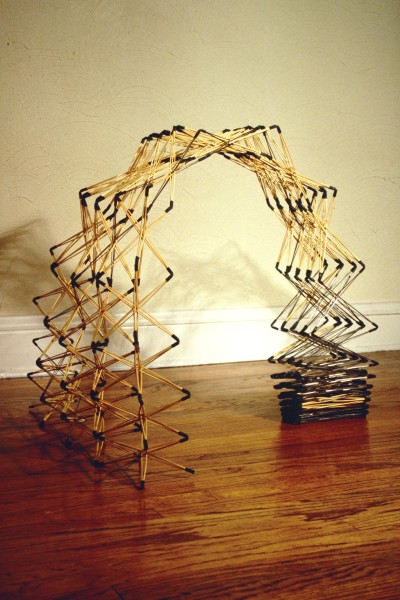 | 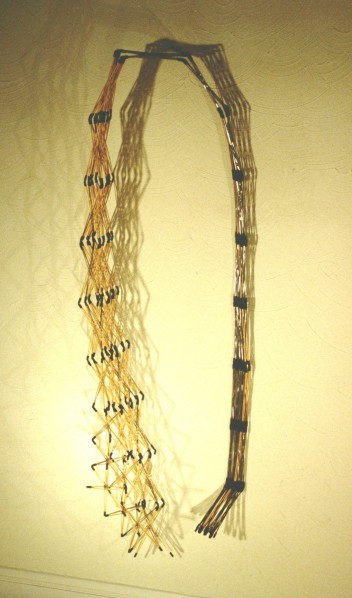 |
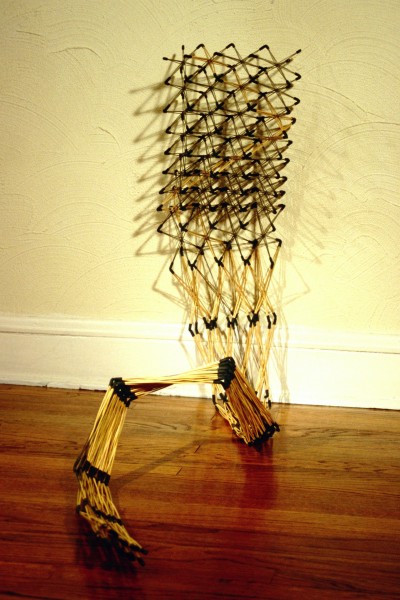 |
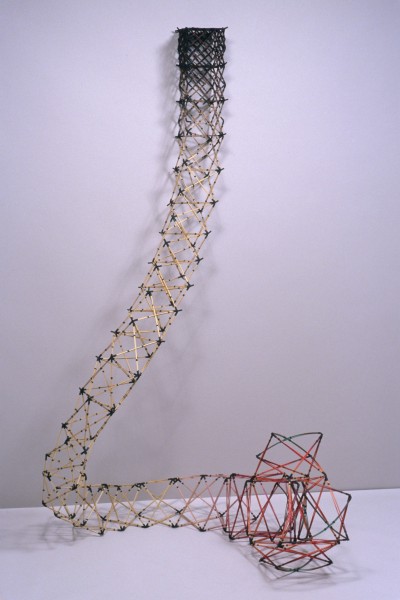 | These two pictures show a linear system where single joints of 2 sets of 3 sticks are joined in a cubic unit. It is made with dyed bamboo sticks and black rubber connectors. One end is filled in with smaller joints creating density at higher frequency.
|
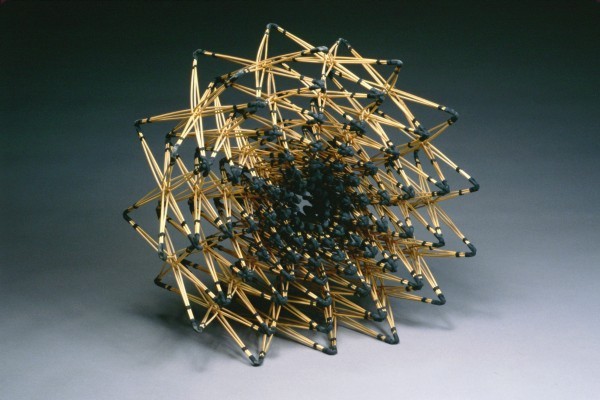 | To the left is the bundle of sticks where each joint is reduced in size as each ring or layer moves towards the center. The other pictures are of the bundle opened and reformed in a few of the many possible reconfigurations. |
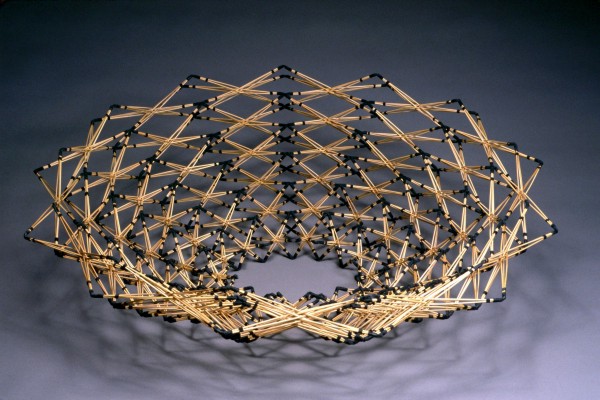 | |
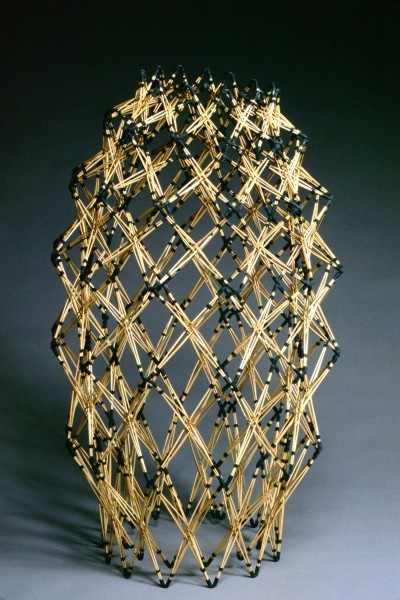 |
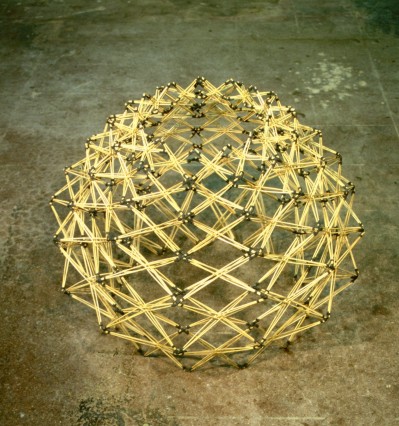 3 stick/4 set joints are used. Each six concentric rings are twelve joins around |
 |
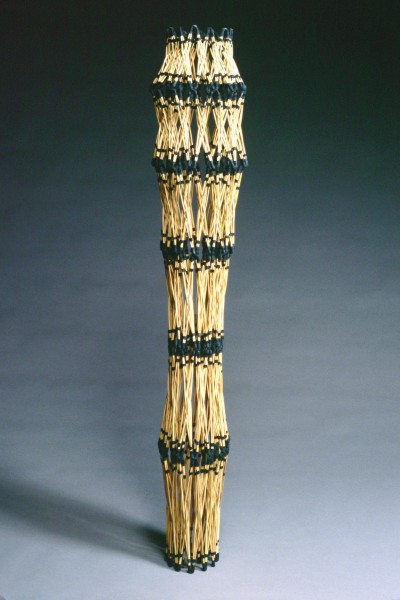 |
|
| Woven dyed bamboo sticks bundled into a bi-tetrahedron arrangement with opposite ends truncated. Each tetrahedron is formed using joints of 3 sticks/2 sets. Three joints are arranged into a triangle ring. There are eight layers of decreasing stick lengths. One is dyed light and the other dark. They are joined by a common triangle plane, as you would find with two solid tetrahedra joined face-to-face. Opened and compressed flat it forms two triangles joined on a common edge as seen below. | ||
|
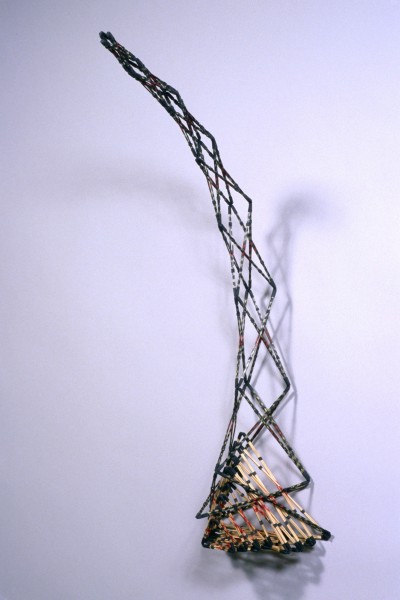 |
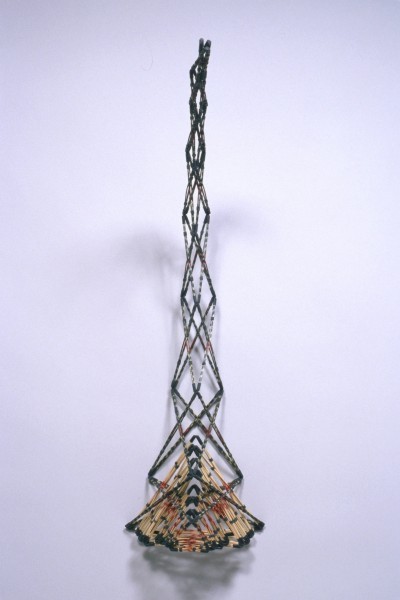 |
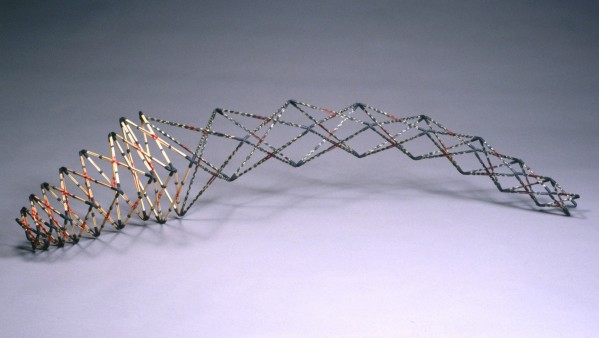 |
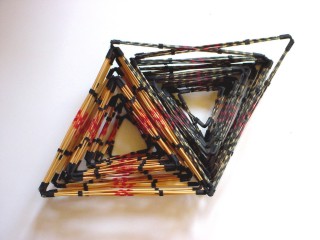 |
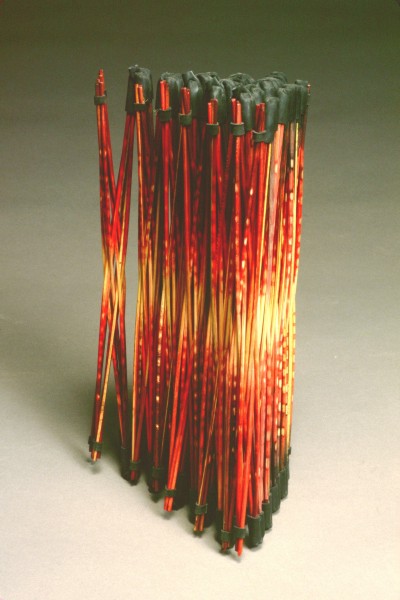 |
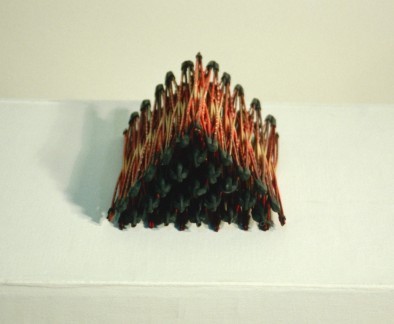 |
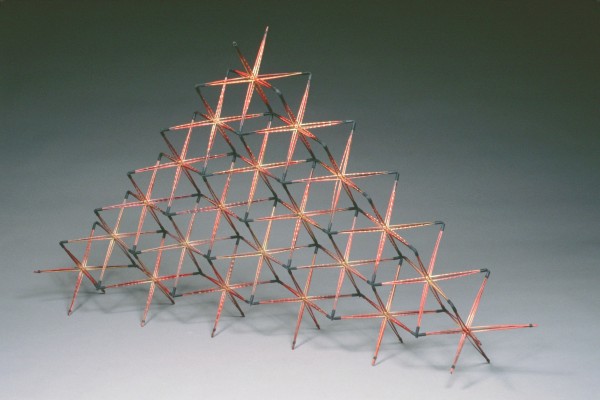 |
Upper left are two views of a triangular prism bundle. Each of the 21 woven joints is 4 sets of 3 sticks in each. The other pictures show various stages of open configurations of the triangle net. The sticks are dyed bamboo with rubber tube connectors. |
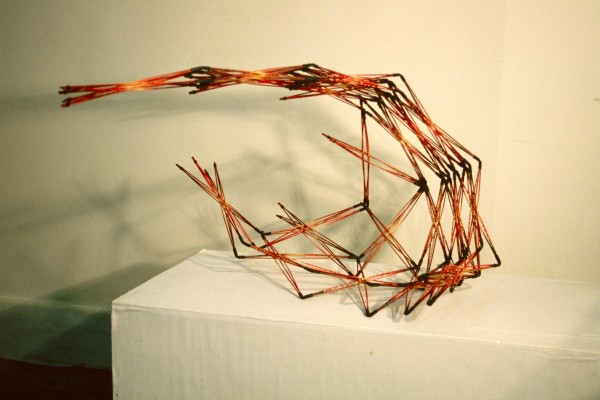 | ||
|
 |
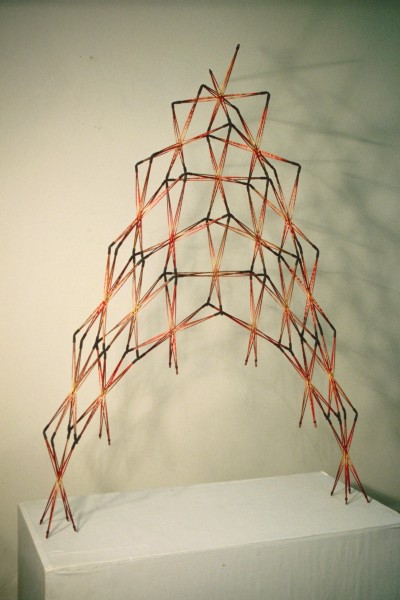 |
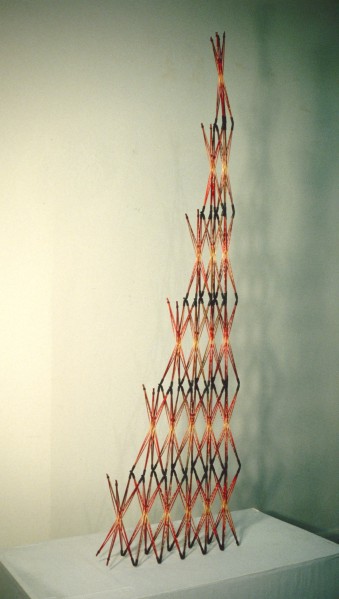 |
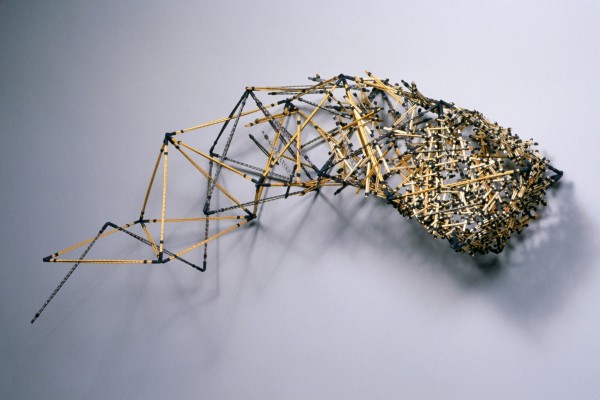 | To the right is pictured a weaving using scissors joints of 3 sticks/2 sets. They are arranged showing the intersecting tetrahedra of the cube. Some of the edge lengths are fractalized by divisions of half filling in the density of the cubic form with smaller scale joints. The movement in this weaving is subtle and undulating. Below is the same cubic weave without filling in, only longer. There is a gradual decrease in size with each cubic segment. |
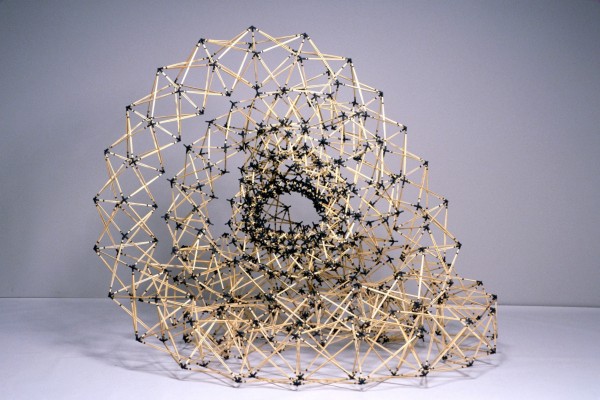 |
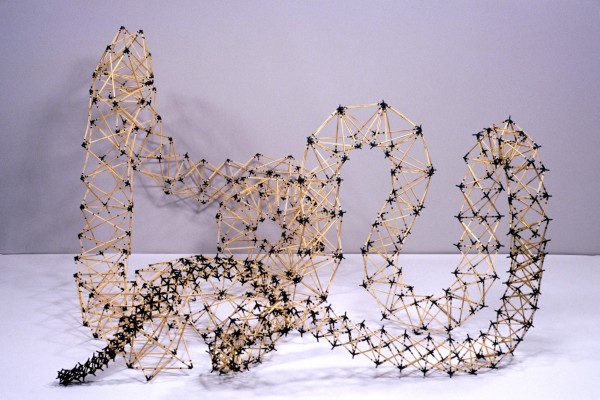 |
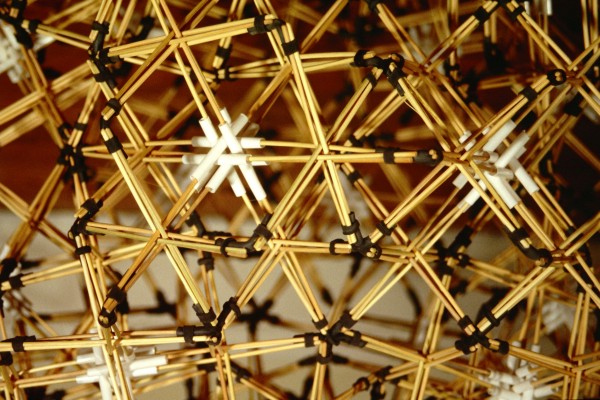 |
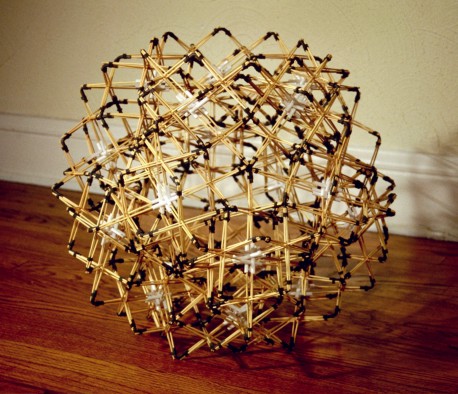 | ||
A sphere made from 3 sticks/3 sets joints. The joints are joined in the five symmetry of the icosahedron. The sphere is strong and compliant at the same time. It does not collapse. |
Five joints of 2 sticks/2 sets each, are joined forming a pentagon. Pentagons are joined forming an eleven layer tube.  |
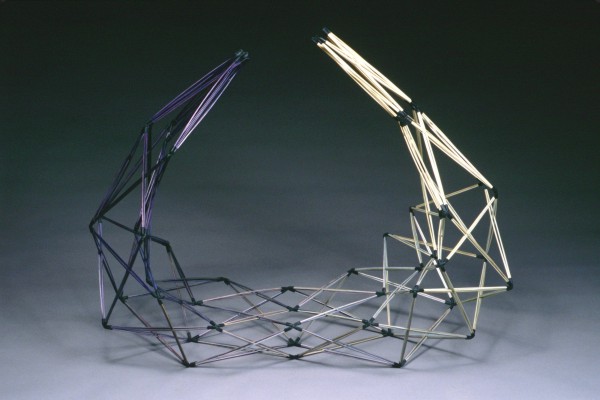 |
 |
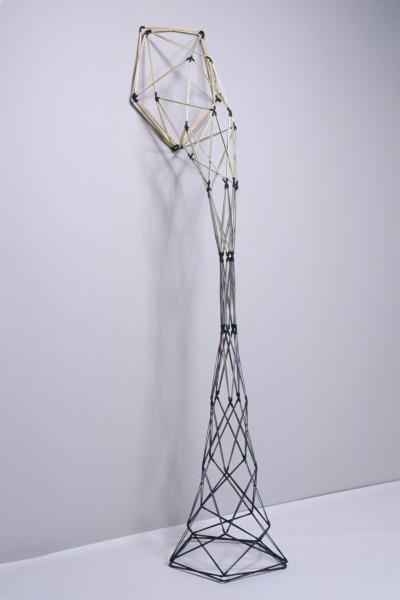 |
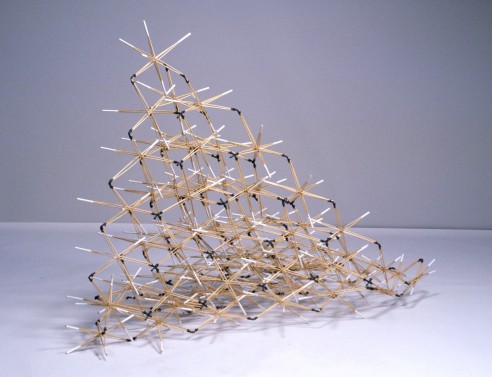 | This shows an open and collapsed view of a system using 3 stick/3 set joints. Each layer is reduced in number of joints keeping the same length sticks.  | ||
 |
| |||
|
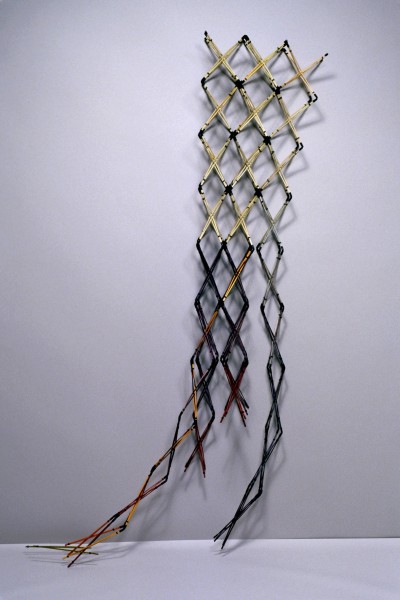 |
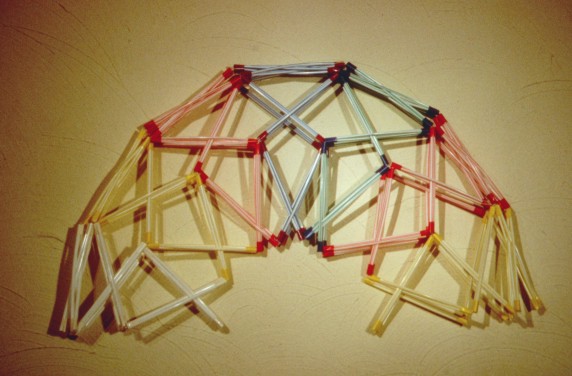 |
 |
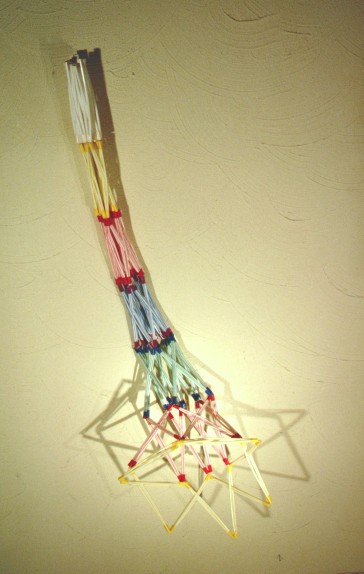 | |
Straws can be woven in the same ways as bamboo sticks. Threading the straws with kit string eliminates having to use rubber connectors. Here is a simple joint of 3 straws/ 2 sets, each joined into a hexagon ring of six joints. Six rings each made with different colored straws when joined together form a hexagon tube. The individual sets are bound on the ends using colored electrical tape. | 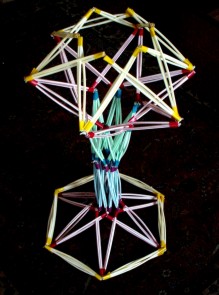 |
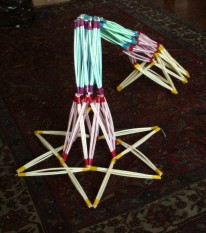 |
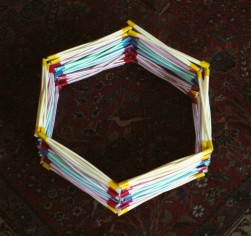 |
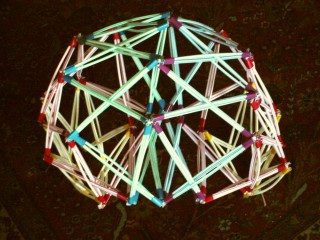 |
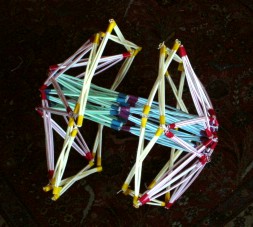 | |
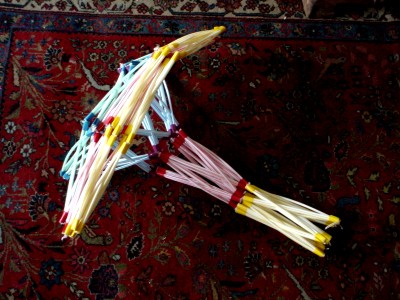 |
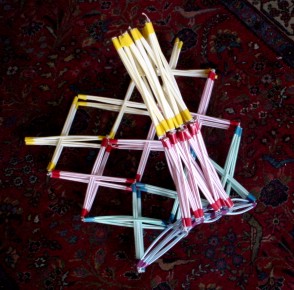 |
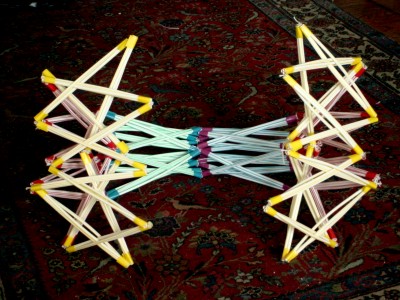 | |
 |
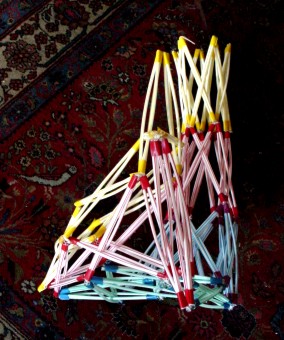 |
||